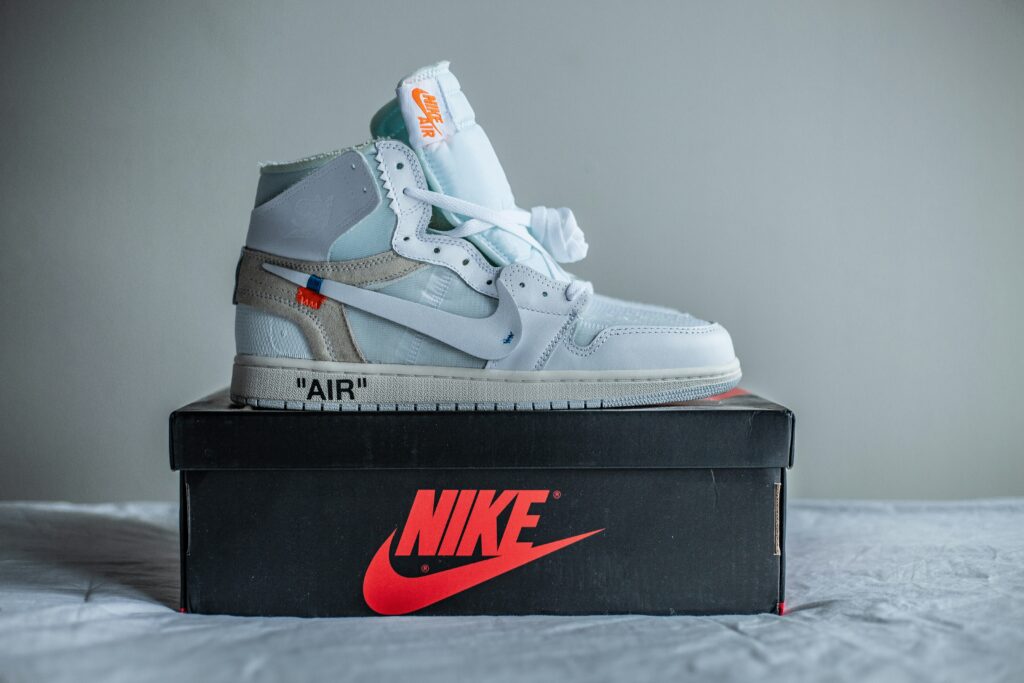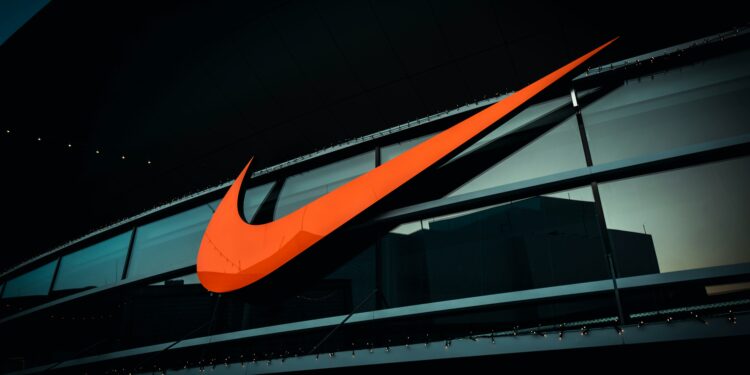Nike Inc. (NYSE:NKE) stands as one of the most iconic and influential athletic apparel and footwear companies in the world, with a legacy defined by innovation, performance, and cultural relevance. Founded in 1964 as Blue Ribbon Sports and officially becoming Nike, Inc. in 1971, the company was co-founded by Phil Knight and legendary track coach Bill Bowerman. Over the decades, Nike has evolved from a small distributor of Japanese running shoes into a global sportswear empire whose Swoosh logo is recognized in virtually every country on the planet.
Headquartered in Beaverton, Oregon, Nike has built its brand on a bold combination of cutting-edge product design, elite athlete endorsements, and emotionally resonant marketing campaigns that inspire millions. From pioneering revolutionary footwear technologies like Air Max and Flyknit, to producing best-in-class athletic apparel and accessories, Nike continues to redefine what it means to blend sport with lifestyle. The company operates across multiple segments including Nike Brand, Jordan Brand, and Converse, catering to a diverse consumer base spanning professional athletes, everyday runners, basketball enthusiasts, and fashion-conscious streetwear followers.
With a presence in over 190 countries, Nike’s distribution network is both expansive and digitally advanced. The brand has invested heavily in direct-to-consumer (DTC) channels, particularly through Nike.com, its SNKRS app, and flagship retail stores in global metropolitan hubs. This strategic shift toward DTC has allowed Nike to deepen consumer relationships, gather valuable first-party data, and drive higher-margin sales while maintaining pricing power and brand integrity.
Nike’s global influence extends far beyond sports. Its partnerships with world-class athletes like Michael Jordan, Serena Williams, Cristiano Ronaldo, and LeBron James have become cultural milestones. The Jordan Brand alone has evolved into a multibillion-dollar empire of its own. Through strategic collaborations with fashion designers, artists, and influencers, Nike continually shapes streetwear trends, blurring the line between athletics and lifestyle.
Financially, Nike is one of the most consistently profitable companies in the consumer discretionary sector, often outperforming broader indices thanks to its strong brand loyalty, premium pricing, and global demand resilience. Despite facing challenges such as shifting consumer behavior, inventory adjustments, and macroeconomic headwinds, Nike has consistently demonstrated its ability to adapt and innovate. Its long-standing commitment to sustainability, digital transformation, and product excellence positions it as a future-ready leader in an increasingly competitive and fast-changing retail landscape.
With over five decades of dominance, a portfolio of culturally embedded products, and a forward-looking business strategy centered on innovation, inclusivity, and sustainability, Nike remains a formidable force in global commerce. Whether through performance-driven athletic gear or trend-setting collaborations, Nike continues to inspire athletes and consumers alike with its enduring mission: to bring inspiration and innovation to every athlete in the world—if you have a body, you’re an athlete.
Earnings Projections Signal Deep Skepticism—but Also a Low Bar to Beat
Consensus estimates for Nike’s Q4 FY2025 earnings report are sobering. Analysts forecast earnings per share of just $0.12—an 87.8% plunge from the $0.99 reported in the same quarter last year. Revenues are projected at $10.72 billion, representing a sharp 14.93% year-over-year decline. These expectations reflect a profound loss of confidence among market participants, not just in Nike’s near-term performance, but in its ability to weather global headwinds and retain its market leadership.
This pessimism is reflected in a flurry of recent analyst downgrades. Over the last two weeks alone, Barclays reduced its price target from $60 to $53, Evercore ISI cut its estimate from $97 to $75, Deutsche Bank trimmed its target from $77 to $71, and Truist lowered its projection from $82 to $73. These revisions are primarily based on concerns around declining margins, weakness in international sales—particularly in China—and uncertainty around the effectiveness of Nike’s ongoing restructuring initiatives.

CHECK THIS OUT: MicroVision (MVIS): A Top Pick in Autonomous Tech Stocks and Innoviz (INVZ) May Be Severely Undervalued — Investors Shouldn’t Ignore This Stock.
Recent Financial Performance Paints a Cautious Picture—but May Mark a Bottom
Nike’s Q3 FY2025 results underscore the challenges it currently faces. The company reported revenue of $11.3 billion, a 9% decline from the prior year, with a 17% drop in China sales—one of its most critical growth regions. EPS declined by 30% to $0.54, and the prior quarter saw similarly disappointing figures, with $12.4 billion in revenue (down 8% YoY) and a 26% drop in net income to $1.2 billion.
This string of underwhelming results has been a key driver of bearish sentiment, and rightfully so. Investors are questioning Nike’s ability to reaccelerate top-line growth and preserve margin strength amid elevated input costs, currency fluctuations, and softer consumer spending in key markets. However, this environment of low expectations sets a stage where any positive deviation—even a smaller-than-expected decline or signs of stabilization—could be met with sharp upward price action.
Strategic Reset Underway as Nike Refocuses on Brand Discipline and Digital Profitability
In response to these macro and operational headwinds, Nike is not standing still. The company has embarked on a wide-reaching strategic reset aimed at realigning its product strategy, cleaning up bloated inventories, and recalibrating its digital commerce efforts. CEO Elliott Hill’s “Win Now” strategy includes disciplined SKU management, where Nike is deliberately reducing the supply of certain footwear lines to elevate brand equity and create demand-driven scarcity. This approach is designed to return Nike to its roots of performance and innovation leadership rather than relying on over-assortment and markdown-driven sales.
Equally important is Nike’s plan to reposition Nike Brand Digital as a full-price platform. After years of leaning heavily on discounting and direct-to-consumer promotions, the company is now shifting toward a premium digital experience that reinforces brand value and enhances gross margins. Alongside this, Nike is investing in revitalizing its wholesale network—rebuilding relationships with key retail partners to ensure strong distribution and channel discipline. While the effects of these strategic initiatives may take several quarters to fully materialize, they signal a clear path toward long-term brand health and operational resilience.
Innovation and Cultural Relevance Remain Core Strengths
Nike’s historic strength lies in its ability to blend performance innovation with cultural impact, and that formula remains firmly intact. Initiatives like the “Breaking4” campaign featuring Olympic gold medalist Faith Kipyegon reinforce Nike’s credibility as a performance brand, while its recent partnership with SKIMS taps into mainstream lifestyle appeal and expands Nike’s relevance in the women’s activewear market. These types of strategic moves serve not only to energize the consumer base but also to reaffirm Nike’s place at the intersection of sports, fashion, and innovation.
Moreover, the company continues to lead in sports marketing, with long-standing partnerships with the NFL, NBA, global football clubs, and elite athletes across disciplines. These assets continue to deliver intangible brand value and loyalty that few competitors can match.
Valuation Metrics and Sentiment Position Nike for a Potential Reversal
From a valuation standpoint, Nike is trading near historically attractive levels. As of June 2025, its forward price-to-earnings multiple has compressed significantly, reflecting the market’s skepticism around growth. Yet, tools like GuruFocus estimate Nike’s fair value at $68.35—a 46.64% premium to current prices. Analyst targets, while recently lowered, still range as high as $90 to $115 over the next 12–24 months, indicating potential for strong re-rating once performance stabilizes.
In many ways, Nike’s current situation echoes past cycles—where temporary softness in global demand and operational missteps created entry points that rewarded those with conviction. If management’s strategic reset begins to show signs of traction and inventory metrics improve, the stage could be set for a powerful rebound in both earnings and investor sentiment.
Conclusion: Nike May Be Facing Its Toughest Test in a Decade—But That’s Where Great Brands Are Forged
Nike is unquestionably at a crossroads. The next few quarters will determine whether the company can reclaim its momentum and reaffirm its dominance in the global sportswear market. But history has shown that the Swoosh has a remarkable ability to adapt, innovate, and rise above cyclical pressures. With disciplined strategy execution, cultural resonance, and a fiercely loyal customer base, Nike has all the components required for a turnaround.
For long-term investors, the current moment presents a rare opportunity to own a globally iconic brand at a deeply discounted price. While short-term volatility may continue to dominate the headlines, those looking out beyond the next earnings call may find that the bottoming of sentiment and expectations in mid-2025 marked the start of Nike’s next long-term growth cycle. The bears may be in charge for now—but history shows the bulls often win in the end when it comes to Nike.
READ ALSO: Golden Matrix Group (GMGI): The Explosive iGaming Stock You’re Probably Sleeping On and This AI Stock Powers Millions of Conversations Daily—LivePerson (LPSN) Deserves a Spot on Your Watchlist.






